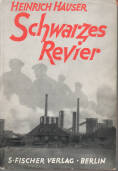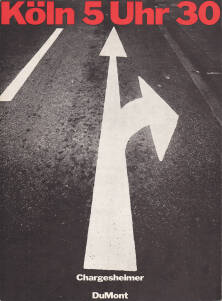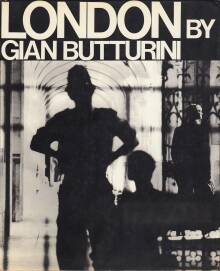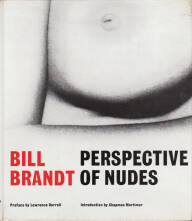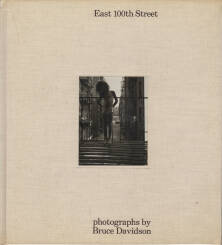HUMAN (signed)
by Gabor Arion Kudasz
Photographs: Gabor Arion Kudasz
Publisher: selfpublished
120 pages
Pictures: 80 duotone illustrations
Year: 2021
ISBN: 978-615-01-0294-8
Price: 38.50 €
Comments: second edition, hardcover, dust jacket, 18,8 x 25 cm, 500 numbered copies, available in English language only, signed.
In HUMAN, Gábor Arion Kudász brings the classic image of the worker to a contemporary level. With a simple element - the brick, Kudász succeeds in astonishing and touching us. The photographs carry us away like in a time capsule into the age of manual work, effort and calloused hands. Workers making bricks were photographed from 2014-2016 in Eastern European countries. We see a production machinery spitting out loamy masses of freshly formed, angular products on an assembly line. I can feel the material, the strain and heat, and think of sweat marks, the smell of dust, aprons and old working gloves. But wait – is there something wrong?! The workers, depicted as in a socialist picture book, behave in an unusual way. They begin to alienate their product and interact with it as if the clay block was the prop of a big stage production. They use it for performative games, point out proportions and give measurements – what's going on?
In his visual encyclopaedia, Kudász leads us into a fairy-tale and surreal world between staging and reality. The workers I meet here have little to do with my understanding of manual labor. They behave like philosophers, engineers, scientists and artists and show us a new working world in a familiar setting. The concepts and conditions of our society unfold on a simple mass product like bricks. Its manufacturing process shows us things that shake the social order. It is about ideals, visions and optimisation processes, about nature, man and measurements - the socially strengthening function of work is reflected here, and a new way of dealing with the given is initiated - the worker is no longer just the slave of his conditions. He begins to rededicate himself to it, and thus, at least in fairy tales, escapes his own angular fate. Tobias Laukemper - TAZ Futurzwei
BIO
Gábor Arion Kudász was born in Budapest in 1978. He is a photographer, teacher and father of three children. His works are usually long-term projects that combine staged elements with documentary photography. Kudász believes that manipulation of the photograph enables the image to express hidden truths. Kudász completed his studies in photography at the Moholy-Nagy University of Art and Design in Budapest, where he has been a lecturer in the master's programme since 2013. He won several international prizes and scholarships. He received the Balogh Rudolf Prize of the Hungarian Republic. His work HUMAN was the winner of the Robert Capa Grand Prize in 2015. Gábor Arion Kudász exhibits internationally and publishes limited edition artist books.
The book HUMAN by Gábor Arion Kudász was self-published first in 2018, now available again.
HUMAN - Artist's Statement
It’s easy to say something is within or is beyond human scale, but finding the actual boundaries embracing everything that is human is a rather difficult venture. Jacob Bronowski, opens his magnificent book, The Ascent of Man, with the following statement: Man is a singular creature. He has a set of gifts which make him unique among the animals: so that, unlike them, he is not a figure in the landscape — he is a shaper of the landscape. In body and in mind he is the explorer of nature, the ubiquitous animal, who did not find but has made his home in every continent.
To begin this work I chose my own narrow horizon, that is limited enough for me to inhabit, while flexible enough to examine all that is human. At the very start I literally stumbled upon an enigmatic object, the brick that later on matured into the perfect metaphor, so many human qualities are reflected by it.
The first evidence of the use of this building material was found in what is today a land of war, Syria, in Tell Aswad, a ten thousand year-old small town near Damascus. Curiously mathematics also emerged at the dawn of human civilization, in the same time and region. There must be something common shared between them. Just like in mathematics, we make bricks by splitting up the formerly continuous fabric of the material world to form identical units, which later can be used to create constructions never seen before. Bricks are the simplified examples of how the universe can be cut into equal units, and thus understood. The size of a brick is derived from human measurements, a grip of a palm, length of a foot, height of a man, his muscle power. The human body was the model for old time measurements and units. Many different such standards coexisted and fought for their own survival. Of course brick too evolved throughout history, its size has grown, its structure and technology became more complex, and still, it remained adjusted to our proportions. When the body becomes data, it is detached from itself. It can turn into a mere illustration of the information extracted using units that once originated from it.
What we call cultural evolution may be only an overlap between biological and technological life. It is clear, Human culture could not exist without evolving technology. All life attempts either to find the surroundings in which it can thrive or it adapts to the given circumstances. Or, it reproduces until it becomes capable of altering the habitat to meet its needs, to reflect itself. As rainforests create their own atmosphere, so does technology. Cities convert their surroundings and force organisms to adapt to the more virulent urban standards. As biological evolution neared the limits of its capacities, a shift to technological evolution was not only a possibility, it was a necessity. Our symbiosis with technology is more than a human achievement, it was the result of life wanting to cross its borders to expand its own horizon. We are at the right time and place to actively participate in it. The human-machine contrary sounds as inappropriate as the human-animal distinction. As Ray Kurzweil puts it: We are rapidly growing more intimate with our technology. Except, from where I see it, technology is not ours, as it is a part of nature, just as we are.
During my time in the brick factories I cooperated with workers in a sensitization process. Workers were given a chance to picture themselves as parts of a capitalistic organism. They formulated questions about their function within it and their emotions toward it. Together we examined their role in production and were confronted with assignments to question the fatigue of a fundamental human gift, creativity. As doubtful as it may sound, the fully automatized brick factories — that improved productivity while radically downsizing manpower — showed a remarkable and accurate, yet allegorical example of the above transition from biological to technological.
The greatest responsibility is to search for our place in the world by constantly redefining our own scale. Human scale can be defined by the horizon outlined by the outermost limits of our senses, but most of what we know and experience of the universe reached us via technology. Man — as he is often referred to — is a being without scale, meant to emphasise the extent of the impact we may make. At the same time we unwillingly admit that man grew unfit to find the origo, the place to call our home.
More books by Gabor Arion Kudasz
-
Memorabilia (signed - last copy)
by Gabor Arion Kudasz
sold out -
Human (signed - English edition - last copy)
by Gabor Arion Kudasz
sold out -
Human (signed - French edition - last copies)
by Gabor Arion Kudasz
sold out -
Human (signed - Hungarian edition - last copy)
by Gabor Arion Kudasz
sold out -
Human (signed - German edition - last copy)
by Gabor Arion Kudasz
sold out -
Tropical Depression (signed)
by Gabor Arion Kudasz
Euro 46 -
Tropical Depression (signed, book+print)
by Gabor Arion Kudasz
Euro 148
more books tagged »Hungarian« | >> see all
-
Minyó (signed)
by Minyo Szert
Euro 25 -
not far (signed+print)
by Ildi Hermann
Euro 69 -
Light years, or silhouettes with light-cycle
by Minψó Szert
Euro 20 -
not far - special edition (signed+print+2booklets - last copy)
by Ildi Hermann
Euro 220 -
The Sundays of Life (signed)
by Bela Doka
Euro 88 -
My sweetheart Zebu! (signed)
by Illés Katalin
Euro 55
more books tagged »conceptual« | >> see all
-
attraction (signed - last copy)
by Damien Daufresne
Euro 165 -
Des oiseaux (English version)
by Nathalie Baetens
Euro 44 -
April Dawn Alison
by Erin O'Toole (ed)
sold out -
I'm sorry (signed)
by Masayuki Yoshinaga
sold out -
Terminus (signed)
by John Divola
Euro 44 -
Oscura Camera
by Sergio Scabar
sold out
more books tagged »black and white« | >> see all
-
Cartacei
by Roberto Kusterle
sold out -
Daughters of the Sun 2018 (signed)
by Claire Felicie
sold out -
Village People 1965-1990 (collector's edition - book + 2 prints)
by Jindrich Streit
sold out -
wiredpeopleproject book #1
by Arthur Gallice
Euro 29 14.50 -
One Picture Book Two #13 : Gas Stations (book + print)
by Toshio Shibata
sold out -
Zillion
by Thomas Manneke
Euro 54
Random selection from the Virtual bookshelf josefchladek.com
HUMAN (signed)
by Gabor Arion Kudasz
Photographs: Gabor Arion Kudasz
Publisher: selfpublished
120 pages
Pictures: 80 duotone illustrations
Year: 2021
ISBN: 978-615-01-0294-8
Price: 38.50 €
Comments: second edition, hardcover, dust jacket, 18,8 x 25 cm, 500 numbered copies, available in English language only, signed.
In HUMAN, Gábor Arion Kudász brings the classic image of the worker to a contemporary level. With a simple element - the brick, Kudász succeeds in astonishing and touching us. The photographs carry us away like in a time capsule into the age of manual work, effort and calloused hands. Workers making bricks were photographed from 2014-2016 in Eastern European countries. We see a production machinery spitting out loamy masses of freshly formed, angular products on an assembly line. I can feel the material, the strain and heat, and think of sweat marks, the smell of dust, aprons and old working gloves. But wait – is there something wrong?! The workers, depicted as in a socialist picture book, behave in an unusual way. They begin to alienate their product and interact with it as if the clay block was the prop of a big stage production. They use it for performative games, point out proportions and give measurements – what's going on?
In his visual encyclopaedia, Kudász leads us into a fairy-tale and surreal world between staging and reality. The workers I meet here have little to do with my understanding of manual labor. They behave like philosophers, engineers, scientists and artists and show us a new working world in a familiar setting. The concepts and conditions of our society unfold on a simple mass product like bricks. Its manufacturing process shows us things that shake the social order. It is about ideals, visions and optimisation processes, about nature, man and measurements - the socially strengthening function of work is reflected here, and a new way of dealing with the given is initiated - the worker is no longer just the slave of his conditions. He begins to rededicate himself to it, and thus, at least in fairy tales, escapes his own angular fate. Tobias Laukemper - TAZ Futurzwei
BIO
Gábor Arion Kudász was born in Budapest in 1978. He is a photographer, teacher and father of three children. His works are usually long-term projects that combine staged elements with documentary photography. Kudász believes that manipulation of the photograph enables the image to express hidden truths. Kudász completed his studies in photography at the Moholy-Nagy University of Art and Design in Budapest, where he has been a lecturer in the master's programme since 2013. He won several international prizes and scholarships. He received the Balogh Rudolf Prize of the Hungarian Republic. His work HUMAN was the winner of the Robert Capa Grand Prize in 2015. Gábor Arion Kudász exhibits internationally and publishes limited edition artist books.
The book HUMAN by Gábor Arion Kudász was self-published first in 2018, now available again.
HUMAN - Artist's Statement
It’s easy to say something is within or is beyond human scale, but finding the actual boundaries embracing everything that is human is a rather difficult venture. Jacob Bronowski, opens his magnificent book, The Ascent of Man, with the following statement: Man is a singular creature. He has a set of gifts which make him unique among the animals: so that, unlike them, he is not a figure in the landscape — he is a shaper of the landscape. In body and in mind he is the explorer of nature, the ubiquitous animal, who did not find but has made his home in every continent.
To begin this work I chose my own narrow horizon, that is limited enough for me to inhabit, while flexible enough to examine all that is human. At the very start I literally stumbled upon an enigmatic object, the brick that later on matured into the perfect metaphor, so many human qualities are reflected by it.
The first evidence of the use of this building material was found in what is today a land of war, Syria, in Tell Aswad, a ten thousand year-old small town near Damascus. Curiously mathematics also emerged at the dawn of human civilization, in the same time and region. There must be something common shared between them. Just like in mathematics, we make bricks by splitting up the formerly continuous fabric of the material world to form identical units, which later can be used to create constructions never seen before. Bricks are the simplified examples of how the universe can be cut into equal units, and thus understood. The size of a brick is derived from human measurements, a grip of a palm, length of a foot, height of a man, his muscle power. The human body was the model for old time measurements and units. Many different such standards coexisted and fought for their own survival. Of course brick too evolved throughout history, its size has grown, its structure and technology became more complex, and still, it remained adjusted to our proportions. When the body becomes data, it is detached from itself. It can turn into a mere illustration of the information extracted using units that once originated from it.
What we call cultural evolution may be only an overlap between biological and technological life. It is clear, Human culture could not exist without evolving technology. All life attempts either to find the surroundings in which it can thrive or it adapts to the given circumstances. Or, it reproduces until it becomes capable of altering the habitat to meet its needs, to reflect itself. As rainforests create their own atmosphere, so does technology. Cities convert their surroundings and force organisms to adapt to the more virulent urban standards. As biological evolution neared the limits of its capacities, a shift to technological evolution was not only a possibility, it was a necessity. Our symbiosis with technology is more than a human achievement, it was the result of life wanting to cross its borders to expand its own horizon. We are at the right time and place to actively participate in it. The human-machine contrary sounds as inappropriate as the human-animal distinction. As Ray Kurzweil puts it: We are rapidly growing more intimate with our technology. Except, from where I see it, technology is not ours, as it is a part of nature, just as we are.
During my time in the brick factories I cooperated with workers in a sensitization process. Workers were given a chance to picture themselves as parts of a capitalistic organism. They formulated questions about their function within it and their emotions toward it. Together we examined their role in production and were confronted with assignments to question the fatigue of a fundamental human gift, creativity. As doubtful as it may sound, the fully automatized brick factories — that improved productivity while radically downsizing manpower — showed a remarkable and accurate, yet allegorical example of the above transition from biological to technological.
The greatest responsibility is to search for our place in the world by constantly redefining our own scale. Human scale can be defined by the horizon outlined by the outermost limits of our senses, but most of what we know and experience of the universe reached us via technology. Man — as he is often referred to — is a being without scale, meant to emphasise the extent of the impact we may make. At the same time we unwillingly admit that man grew unfit to find the origo, the place to call our home.
More books by Gabor Arion Kudasz
-
Memorabilia (signed - last copy)
by Gabor Arion Kudasz
sold out -
Human (signed - English edition - last copy)
by Gabor Arion Kudasz
sold out -
Human (signed - French edition - last copies)
by Gabor Arion Kudasz
sold out -
Human (signed - Hungarian edition - last copy)
by Gabor Arion Kudasz
sold out -
Human (signed - German edition - last copy)
by Gabor Arion Kudasz
sold out -
Tropical Depression (signed)
by Gabor Arion Kudasz
Euro 46 -
Tropical Depression (signed, book+print)
by Gabor Arion Kudasz
Euro 148
more books tagged »Hungarian« | >> see all
-
Minyó (signed)
by Minyo Szert
Euro 25 -
not far (signed+print)
by Ildi Hermann
Euro 69 -
Light years, or silhouettes with light-cycle
by Minψó Szert
Euro 20 -
not far - special edition (signed+print+2booklets - last copy)
by Ildi Hermann
Euro 220 -
The Sundays of Life (signed)
by Bela Doka
Euro 88 -
My sweetheart Zebu! (signed)
by Illés Katalin
Euro 55
more books tagged »conceptual« | >> see all
-
attraction (signed - last copy)
by Damien Daufresne
Euro 165 -
Des oiseaux (English version)
by Nathalie Baetens
Euro 44 -
April Dawn Alison
by Erin O'Toole (ed)
sold out -
I'm sorry (signed)
by Masayuki Yoshinaga
sold out -
Terminus (signed)
by John Divola
Euro 44 -
Oscura Camera
by Sergio Scabar
sold out
more books tagged »black and white« | >> see all
-
Cartacei
by Roberto Kusterle
sold out -
Daughters of the Sun 2018 (signed)
by Claire Felicie
sold out -
Village People 1965-1990 (collector's edition - book + 2 prints)
by Jindrich Streit
sold out -
wiredpeopleproject book #1
by Arthur Gallice
Euro 29 14.50 -
One Picture Book Two #13 : Gas Stations (book + print)
by Toshio Shibata
sold out -
Zillion
by Thomas Manneke
Euro 54
Random selection from the Virtual bookshelf josefchladek.com
HUMAN (signed)
by Gabor Arion Kudasz
Photographs: Gabor Arion Kudasz
Publisher: selfpublished
120 pages
Pictures: 80 duotone illustrations
Year: 2021
ISBN: 978-615-01-0294-8
Price: 38.50 €
Comments: second edition, hardcover, dust jacket, 18,8 x 25 cm, 500 numbered copies, available in English language only, signed.
In HUMAN, Gábor Arion Kudász brings the classic image of the worker to a contemporary level. With a simple element - the brick, Kudász succeeds in astonishing and touching us. The photographs carry us away like in a time capsule into the age of manual work, effort and calloused hands. Workers making bricks were photographed from 2014-2016 in Eastern European countries. We see a production machinery spitting out loamy masses of freshly formed, angular products on an assembly line. I can feel the material, the strain and heat, and think of sweat marks, the smell of dust, aprons and old working gloves. But wait – is there something wrong?! The workers, depicted as in a socialist picture book, behave in an unusual way. They begin to alienate their product and interact with it as if the clay block was the prop of a big stage production. They use it for performative games, point out proportions and give measurements – what's going on?
In his visual encyclopaedia, Kudász leads us into a fairy-tale and surreal world between staging and reality. The workers I meet here have little to do with my understanding of manual labor. They behave like philosophers, engineers, scientists and artists and show us a new working world in a familiar setting. The concepts and conditions of our society unfold on a simple mass product like bricks. Its manufacturing process shows us things that shake the social order. It is about ideals, visions and optimisation processes, about nature, man and measurements - the socially strengthening function of work is reflected here, and a new way of dealing with the given is initiated - the worker is no longer just the slave of his conditions. He begins to rededicate himself to it, and thus, at least in fairy tales, escapes his own angular fate. Tobias Laukemper - TAZ Futurzwei
BIO
Gábor Arion Kudász was born in Budapest in 1978. He is a photographer, teacher and father of three children. His works are usually long-term projects that combine staged elements with documentary photography. Kudász believes that manipulation of the photograph enables the image to express hidden truths. Kudász completed his studies in photography at the Moholy-Nagy University of Art and Design in Budapest, where he has been a lecturer in the master's programme since 2013. He won several international prizes and scholarships. He received the Balogh Rudolf Prize of the Hungarian Republic. His work HUMAN was the winner of the Robert Capa Grand Prize in 2015. Gábor Arion Kudász exhibits internationally and publishes limited edition artist books.
The book HUMAN by Gábor Arion Kudász was self-published first in 2018, now available again.
HUMAN - Artist's Statement
It’s easy to say something is within or is beyond human scale, but finding the actual boundaries embracing everything that is human is a rather difficult venture. Jacob Bronowski, opens his magnificent book, The Ascent of Man, with the following statement: Man is a singular creature. He has a set of gifts which make him unique among the animals: so that, unlike them, he is not a figure in the landscape — he is a shaper of the landscape. In body and in mind he is the explorer of nature, the ubiquitous animal, who did not find but has made his home in every continent.
To begin this work I chose my own narrow horizon, that is limited enough for me to inhabit, while flexible enough to examine all that is human. At the very start I literally stumbled upon an enigmatic object, the brick that later on matured into the perfect metaphor, so many human qualities are reflected by it.
The first evidence of the use of this building material was found in what is today a land of war, Syria, in Tell Aswad, a ten thousand year-old small town near Damascus. Curiously mathematics also emerged at the dawn of human civilization, in the same time and region. There must be something common shared between them. Just like in mathematics, we make bricks by splitting up the formerly continuous fabric of the material world to form identical units, which later can be used to create constructions never seen before. Bricks are the simplified examples of how the universe can be cut into equal units, and thus understood. The size of a brick is derived from human measurements, a grip of a palm, length of a foot, height of a man, his muscle power. The human body was the model for old time measurements and units. Many different such standards coexisted and fought for their own survival. Of course brick too evolved throughout history, its size has grown, its structure and technology became more complex, and still, it remained adjusted to our proportions. When the body becomes data, it is detached from itself. It can turn into a mere illustration of the information extracted using units that once originated from it.
What we call cultural evolution may be only an overlap between biological and technological life. It is clear, Human culture could not exist without evolving technology. All life attempts either to find the surroundings in which it can thrive or it adapts to the given circumstances. Or, it reproduces until it becomes capable of altering the habitat to meet its needs, to reflect itself. As rainforests create their own atmosphere, so does technology. Cities convert their surroundings and force organisms to adapt to the more virulent urban standards. As biological evolution neared the limits of its capacities, a shift to technological evolution was not only a possibility, it was a necessity. Our symbiosis with technology is more than a human achievement, it was the result of life wanting to cross its borders to expand its own horizon. We are at the right time and place to actively participate in it. The human-machine contrary sounds as inappropriate as the human-animal distinction. As Ray Kurzweil puts it: We are rapidly growing more intimate with our technology. Except, from where I see it, technology is not ours, as it is a part of nature, just as we are.
During my time in the brick factories I cooperated with workers in a sensitization process. Workers were given a chance to picture themselves as parts of a capitalistic organism. They formulated questions about their function within it and their emotions toward it. Together we examined their role in production and were confronted with assignments to question the fatigue of a fundamental human gift, creativity. As doubtful as it may sound, the fully automatized brick factories — that improved productivity while radically downsizing manpower — showed a remarkable and accurate, yet allegorical example of the above transition from biological to technological.
The greatest responsibility is to search for our place in the world by constantly redefining our own scale. Human scale can be defined by the horizon outlined by the outermost limits of our senses, but most of what we know and experience of the universe reached us via technology. Man — as he is often referred to — is a being without scale, meant to emphasise the extent of the impact we may make. At the same time we unwillingly admit that man grew unfit to find the origo, the place to call our home.
More books by Gabor Arion Kudasz
-
Memorabilia (signed - last copy)
by Gabor Arion Kudasz
sold out -
Human (signed - English edition - last copy)
by Gabor Arion Kudasz
sold out -
Human (signed - French edition - last copies)
by Gabor Arion Kudasz
sold out -
Human (signed - Hungarian edition - last copy)
by Gabor Arion Kudasz
sold out -
Human (signed - German edition - last copy)
by Gabor Arion Kudasz
sold out -
Tropical Depression (signed)
by Gabor Arion Kudasz
Euro 46 -
Tropical Depression (signed, book+print)
by Gabor Arion Kudasz
Euro 148
more books tagged »Hungarian« | >> see all
-
Minyó (signed)
by Minyo Szert
Euro 25 -
not far (signed+print)
by Ildi Hermann
Euro 69 -
Light years, or silhouettes with light-cycle
by Minψó Szert
Euro 20 -
not far - special edition (signed+print+2booklets - last copy)
by Ildi Hermann
Euro 220 -
The Sundays of Life (signed)
by Bela Doka
Euro 88 -
My sweetheart Zebu! (signed)
by Illés Katalin
Euro 55
more books tagged »conceptual« | >> see all
-
attraction (signed - last copy)
by Damien Daufresne
Euro 165 -
Des oiseaux (English version)
by Nathalie Baetens
Euro 44 -
April Dawn Alison
by Erin O'Toole (ed)
sold out -
I'm sorry (signed)
by Masayuki Yoshinaga
sold out -
Terminus (signed)
by John Divola
Euro 44 -
Oscura Camera
by Sergio Scabar
sold out
more books tagged »black and white« | >> see all
-
Cartacei
by Roberto Kusterle
sold out -
Daughters of the Sun 2018 (signed)
by Claire Felicie
sold out -
Village People 1965-1990 (collector's edition - book + 2 prints)
by Jindrich Streit
sold out -
wiredpeopleproject book #1
by Arthur Gallice
Euro 29 14.50 -
One Picture Book Two #13 : Gas Stations (book + print)
by Toshio Shibata
sold out -
Zillion
by Thomas Manneke
Euro 54
Random selection from the Virtual bookshelf josefchladek.com

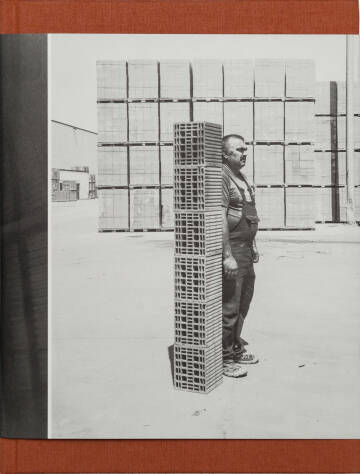












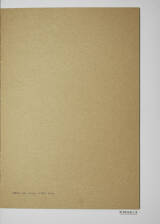
























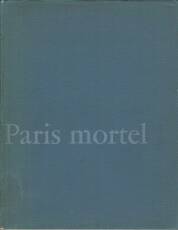
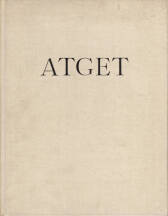
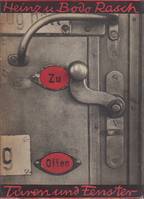

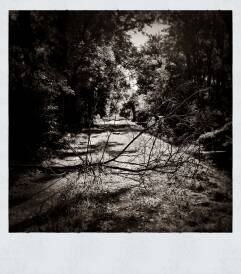



;jpg?c=30680946c79018a3c23d7b3ea13e8de6)
